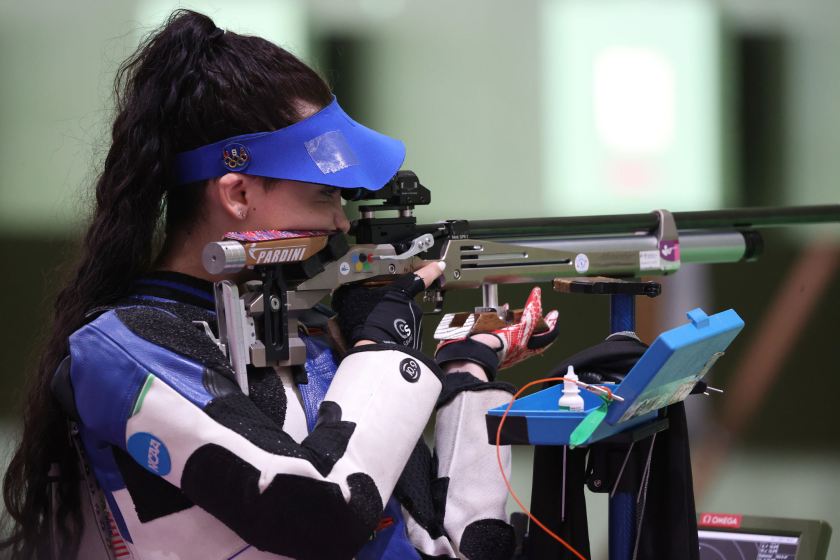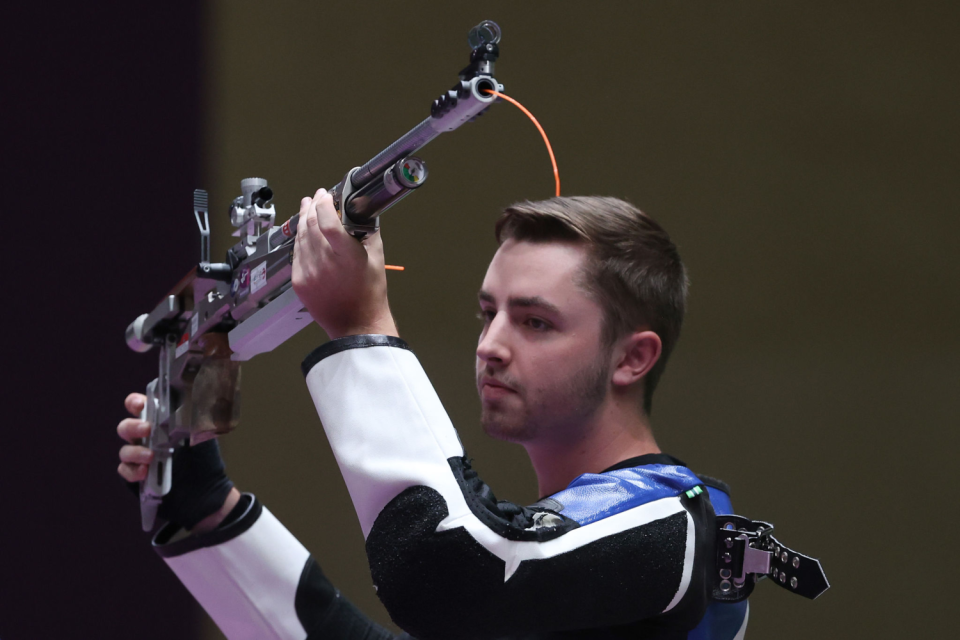U.S. Shooting taking lead on countering the sport's negative connotations

Every American competitor came to Tokyo facing numerous obstacles, from COVID-19 protocols and jet lag to language barriers and inhospitable weather.
That was just the start of the list for the athletes with USA Shooting, who left a country with some of the most lax gun laws in the world for a country with some of the strictest. That meant more regulations, more paperwork and more scrutiny.
“That process is a lot more extensive and intensive than what we find in most countries that we traveled to,” said Matt Suggs, a competitive rifle shooter before becoming chief executive of the U.S. federation last summer.
Imagine a javelin thrower or surfer having to store the tools of their trade in a locked box between practices? Happens all the time with shooters. But in Tokyo, in addition to all the usual precautions, the 20 U.S. athletes also were limited as to how much ammunition they could bring. That forced the team to contract with a local distributor, who couldn’t replenish the thousands of rounds the team needed each day until confirming the previous day’s supply was exhausted.
“To become a gold medalist, it takes a lot of ammo,” said Suggs, who buys it by the pallet back home. “Every couple of days, we're putting in additional purchase orders for more.”
Despite the obstacles, the U.S. has won six medals — three gold, two silvers and a bronze, matching its second-best performance since World War II — heading into Monday’s final events at the Asaka Shooting Range, which sits next to a military base 15 miles outside downtown Tokyo.
“USA Shooting is improving on pretty much all of our aspects and we're becoming a better team,” said Mary Tucker, who teamed with Lucas Kozeniesky to win a silver medal in mixed team air rifle. “I hope that this keeps getting people interested in the sport.
“There's not a lot of interest in shooting in the U.S., so hopefully us bringing our medal count up to ... [six] will help."
But if shooting’s popularity is lagging, it’s less a question of Olympic success than it is an image problem in a deeply polarized country, where gun violence and gun control are hot-button issues.
“Shooting in general in the U.S. has a negative connotation,” said James Hall, 37, who competed in the 10-meter air pistol team and individual events in Tokyo.
Firearms are so pervasive in the U.S., there are more guns than people, according to a 2018 report by the Swiss-based Small Arms Survey. But just a fraction of those firearms are used for competitive shooting. Through the first seven months of this year, for example, guns were responsible for nearly 12,000 deaths and more than 23,000 injuries, the Gun Violence Archive, a nonprofit research organization, reports.
That’s an average of 112 injuries and 56 deaths a day, or 10 times as many deaths as Olympic medals every 24 hours. The U.S. is on pace to surpass last year's number of 19,402 gun deaths, the highest in more than two decades.
Hall says the best way to counter that is education.
“Shooting education is really important,” said Hall, who has worked as a firearms instructor. “I will be working with a lot of kids across the U.S. to educate them on the fundamentals of firearm safety, as well as the education on concentration and focus, so that somebody can compete at my level in the States.”
Two others members of the Olympic team — Kozeniesky and skeet shooter Vinny Hancock — also teach the sport.
The culture inside competitive shooting is shifting and growing younger, Suggs said, with two 20-year-olds — Tucker and Will Shaner, the champion in 10-meter air rifle — medaling in Tokyo. And Suggs said the young U.S. team, which also includes 20-year-old Henry Leverett, his 21-year-old brother Jack and Austen Smith, 20, is invested in countering the negative stereotypes surrounding their sport.

“It's just about shooting, shooting paper targets,” said Suggs, who did public service announcements on gun safety while he was still competing. “It's not silhouettes, or anything combat related.”
“The [public] focus is too much on guns that look scary and guns that you see on TV shows being used to commit crimes or on the news being used to commit crimes,” he added. “Our athletes ... understand that they have a role to play in promoting the proper and responsible use of firearms.”
Accomplishing that is essential if USA Shooting hopes to continue winning Olympic medals.
“It's not a controversial thing, to go out and shoot a round of skeet or shoot a round of trap,” Suggs said. “The more we can get people exposed to the sport, the less they'll identify gun ownership with what they see on the evening news.”
This story originally appeared in Los Angeles Times.

